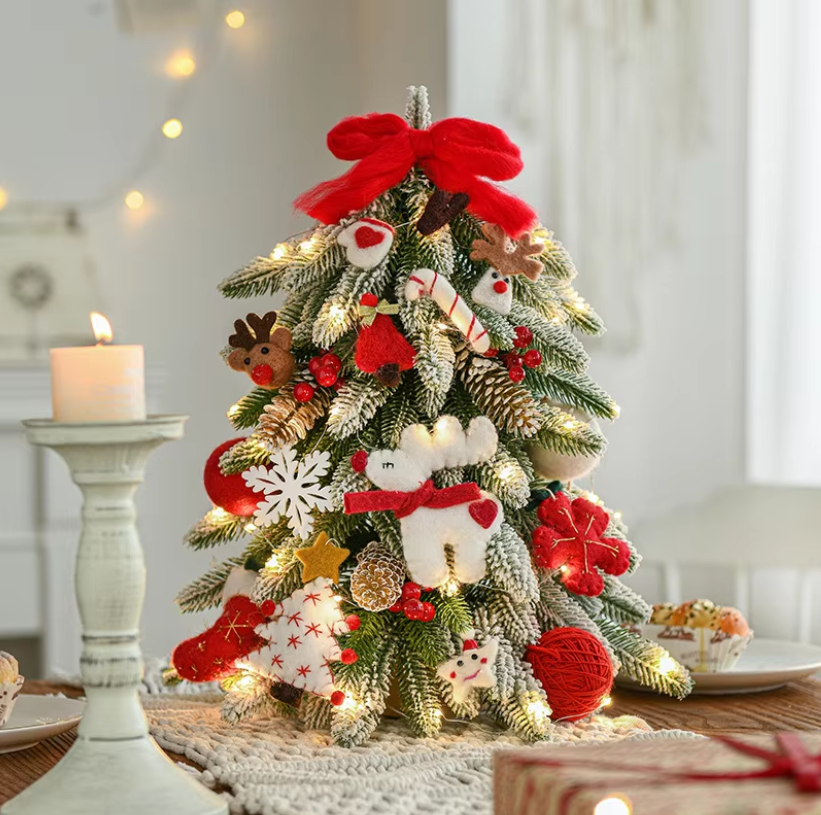การ ปกครอง ต้น ไม้ คริสต์มาส
การแนะนําธรรมะของต้นคริสต์มาสต์ทั่วโลก
ไม้คริสต์มาสต์กลายเป็นหนึ่งในสัญลักษณ์ที่รู้จักกันดีที่สุดของฤดูคริสต์มาสต์ ไม้ ไม้ ไม้ ไม้ ไม้ ไม้ ไม้ ไม้ ไม้ ไม้ ไม้ ไม้ ไม้ ไม้ ไม้ ไม้ ไม้ ไม้ ไม้ ไม้ ไม้ ไม้ ไม้ ไม้ ไม้ ไม้ ไม้ ไม้ ไม้ ไม้ ไม้ ไม้ ไม้ ไม้ ไม้ ไม้ ไม้ ไม้ ไม้ แม้ว่านิสัยนี้จะเกิดจากยุโรป แต่การประดับและแสดง ต้นคริสต์มาส ตั้งแต่นั้นก็แพร่ทั่วโลก ผสมผสานกับวัฒนธรรม ประวัติศาสตร์ และประเพณีศิลปะของท้องถิ่น แต่ละประเทศได้ตีความใหม่ประเพณีในวิธีที่แตกต่างกัน ต้นคริสต์มาส ไม่ใช่แค่เครื่องหมายวันหยุดทั่วโลก แต่ยังเป็นผ้าปูสําหรับการแสดงออกทางวัฒนธรรม
ประเพณีของยุโรป
เยอรมนี: ที่เกิดของต้นคริสต์มาส
เยอรมนี เป็น ที่เกิดของต้นไม้คริสต์มาส การ ปลูก ต้นไม้ ใน บ้าน การประดับในยุคแรก ได้แก่ แอปเปิ้ล มะเขือเทศ และดอกไม้กระดาษ ที่เป็นสัญลักษณ์ของความอุดมสมบูรณ์และความสุข ต่อมา มีเทียนเพิ่มขึ้น ซึ่งกลายมาเป็นไฟฟ้าในปัจจุบัน แม้ แต่ วัน นี้ เยอรมัน ยัง ฉลอง ด้วย ความ กระตือรือร้น มาก และ เมือง หลาย แห่ง จัด การ ตลาด คริสต์มาสต์ ที่ มี ต้นไม้ คริสต์มาสต์ เป็น ที่ น่าสนใจ ที่ ถูก แต่ง ด้วย เครื่องประดับ ที่ ทํา ด้วยมือ และ งาน ช่างไม้
สหราชอาณาจักร: อิทธิพลของราชอาณาจักร
ไม้คริสต์มาสต์ได้รับความนิยมในสหราชอาณาจักรในช่วงการปกครองของราชินีวิคตอเรีย สามีของเธอที่เกิดในเยอรมัน เจ้าชายอัลเบิร์ต นําเสนอประเพณีการตกแต่งต้นไม้ และภาพของครอบครัวราชวงศ์ที่รวบรวมกันรอบต้นไม้คริสต์มาสในปี 1848 ทําให้ประเพณีนี้มีแฟชั่นในหมู่ประชาชนอังกฤษ วัน นี้ ไม้ ใน ประเทศ อังกฤษ มัก จะ ถูก แต่ง ด้วย กลอง, ไม้ ไม้ ไม้ ไม้ ไม้ ไม้ ไม้ ไม้ ไม้ ไม้ ไม้ ไม้ ไม้ ไม้ ไม้ ไม้ ไม้ ไม้ ไม้ ไม้ ไม้ ไม้ ไม้ ไม้ ไม้ ไม้ ไม้ ไม้ ประเพณีอังกฤษที่โด่งดังคือต้นคริสต์มาสใน Trafalgar Square ซึ่งเป็นของขวัญจากนอร์เวย์ไปยังลอนดอนทุกปี เพื่อแสดงความขอบคุณสําหรับการสนับสนุนของอังกฤษในสงครามโลกครั้งที่สอง
สแกนดิเนเวีย: การ แต่งงาน โดยธรรมชาติ และ การ ทํา ด้วยมือ
ในนอร์เวย์ สวีเดน และเดนมาร์ก ต้นไม้คริสต์มาสถูกตกแต่งด้วยเครื่องประดับธรรมชาติ เช่น ดาวสลาม หัวใจกระดาษที่ทําด้วยมือ และคุกกี้เล็ก ๆ การ สร้าง สถาน ที่ ที่ ดี ประเพณีสกานดิเนเวียเน้นความเรียบง่าย ความงามทางธรรมชาติ และการตกแต่งที่เน้นครอบครัว สะท้อนถึงคุณค่าทางวัฒนธรรมของภูมิภาคของความอบอุ่นและความสามัคคีระหว่างคืนหนาวยาว
ประเพณีอเมริกาเหนือ
สหรัฐอเมริกา: การ ผสมผสาน วัฒนธรรม
ใน สหรัฐอเมริกา ไม้คริสต์มาส ได้ เจริญ เจริญ ใน ศตวรรษ ที่ 19 ด้วย การ ผสมผสาน ของ พวก เยอรมัน และ การ มี อิทธิพล จาก ประเพณี ของ อังกฤษ ปัจจุบัน ไม้คริสต์มาสของอเมริกามักมีรูปแบบที่หล่อหลอม มีไฟฟ้า, เครื่องประดับสีสัน, สร้อย, และบางครั้งมีประดับประเด็น การ ปรากฏ ของ ต้นไม้ คริสต์มาสต์ ใน สถานการณ์ ครอบครัวแต่ละครอบครัวมักมีสไตล์ของตัวเอง โดยมีเครื่องประดับของหลวง, งานมือมือ, หรือธีมที่ทันสมัย ส่งผลให้มีประเพณีที่หลากหลายและเป็นส่วนตัวสูง
แคนาดา: ความแตกต่างทางภูมิภาค
ต้นไม้คริสต์มาสต์ของแคนาดาสะท้อนประชากรที่มีความหลากหลายทางวัฒนธรรมของประเทศ ในควีเบค ประเพณีฝรั่งเศสมีอิทธิพลต่อการตกแต่ง ในขณะที่ในจังหวัดตะวันตก ประเพณีเยอรมันและสกินดิเนเวีย เป็นเรื่องปกติกว่า การ สร้าง ไม้ ไม้ ไม้ ไม้ ไม้ ไม้ ไม้ ไม้ ไม้ ไม้ ไม้ ไม้ ไม้ ไม้ ไม้ ไม้ ไม้ ไม้ ไม้ ไม้ ไม้ ไม้ ไม้ ไม้ ไม้ ไม้ ไม้ ไม้ ไม้ ไม้ ไม้ ไม้ ไม้ ไม้ ไม้ ไม้ ไม้ การแสดงสาธารณะในเมืองเน้นการหลากหลายวัฒนธรรม โดยมีเครื่องประดับและการออกแบบสะท้อนประเพณีวันหยุดโลก
ประเพณี ของ อเมริกา ลาติน
เม็กซิโก: ภาพ พระ นม และ ไม้ ไม้ ที่ ถัก ไว้ ใน การ ฉลอง
ในเม็กซิโก ต้นไม้คริสต์มาส กําลังได้รับความนิยมมากขึ้น แต่สถานการณ์การเกิดของพระเยซู หรือ Nacimiento เป็นประเพณีที่ยังคงเป็นจุดสําคัญของการตกแต่ง การ ปรับปรุง ไม้ คริสต์มาส การ ปก ป้อง ความ ปราศจาก ความ สงสาร

บราซิล: การปรับตัวเข้ากับสภาพอากาศแบบเขตร้อน
บราซิลเฉลิมฉลองวันคริสต์มาสในช่วงฤดูร้อน ดังนั้นต้นคริสต์มาสแบบประดิษฐ์จึงมักได้รับความนิยมมากกว่าเนื่องจากสภาพอากาศ เครื่องตกแต่งโดยทั่วไปมีโทสีสันสดใส ดอกไม้แบบเขตร้อน และไฟฟ้าประดับที่แสดงถึงวัฒนธรรมอันมีชีวิตชีวา พื้นที่สาธารณะมักมีการแสดงตกแต่งอย่างยิ่งใหญ่ โดยเมืองริโอเดอจาเนโรมีชื่อเสียงในการจัดแสดงต้นคริสต์มาสที่ใหญ่ที่สุดในโลก
อาร์เจนตินา: ดอกไม้ไฟและงานรวมญาติ
ในอาร์เจนตินา ครอบครัวต่างๆ มักจะตั้งต้นคริสต์มาสในวันที่ 8 ธันวาคม ซึ่งเป็นวันฉลองพระแม่มารีปฏิสนธินิรมล ของตกแต่งประดับด้วยผ้าฝ้ายเพื่อสื่อถึงหิมะ แม้ว่าคริสต์มาสจะตกอยู่ในช่วงฤดูร้อน การเฉลิมฉลองจะเน้นไปที่การรวมตัวของครอบครัว และต้นคริสต์มาสก็เป็นศูนย์กลางของการตกแต่งในเทศกาล การจุดพลุไฟในคืนเที่ยงคืนของวันคริสต์มาสอีฟ ถือเป็นสัญลักษณ์สำคัญของประเพณีคริสต์มาสของอาร์เจนตินา
ประเพณีวันคริสต์มาสในเอเชีย
ญี่ปุ่น: การเฉลิมฉลองที่ไม่เกี่ยวข้องกับศาสนา
แม้ว่าคริสต์มาสจะไม่ใช่วันหยุดทางศาสนาในญี่ปุ่น แต่ต้นคริสต์มาสยังได้รับความนิยมในฐานะสัญลักษณ์ของความสุขและความโรแมนติก มักมีการตกแต่งต้นไม้ด้วยของประดับทำจากกระดาษโอริงามิ โคมไฟกระดาษ และบางครั้งก็มีตัวการ์ตูน ศูนย์กลางเมืองใหญ่ๆ เช่น โตเกียว มีการแสดงแสงไฟอย่างอลังการ โดยมีต้นคริสต์มาสเป็นฉากหลังสำหรับเทศกาลตามฤดูกาล
จีน: ความนิยมที่เพิ่มขึ้น
ในจีน คริสต์มาสถูกเฉลิมฉลองมากกว่าเหตุการณ์ทางการค้ามากกว่าเหตุการณ์ทางศาสนา ต้นคริสต์มาสในจีนเรียกกันว่า "ต้นไม้แห่งแสง" และตกแต่งด้วยพวงมาลัยกระดาษ ดอกไม้ และโคมไฟ สถานที่สาธารณะในเมืองใหญ่มีการแสดงที่ยิ่งใหญ่ แต่การเฉลิมฉลองที่บ้านพบว่ามีน้อยกว่า ความนิยมที่เพิ่มขึ้นของต้นคริสต์มาสในจีนสะท้อนให้เห็นถึงกระแสโลกาภิวัตน์และความน่าดึงดูดของงานตกแต่งในเทศกาล
ฟิลิปปินส์: ฤดูกาลคริสต์มาสที่ยาวนาน
ฟิลิปปินส์ เป็นที่รู้จักกันว่ามีฤดูกาลคริสต์มาสที่ยาวนานที่สุดในโลก เริ่มต้นตั้งแต่เดือนกันยายน ภาพ การ เกิด ของ พระ เยซู เป็น สิ่ง ที่ สําคัญ ที่ สุด ใน การ แต่ง แต่ง แต่ง ไม้ถูกตกแต่งด้วยแสงสีสัน สายสลัด และเครื่องประดับที่ทําด้วยมือ การ ปฏิบัติ ตาม หลัก การ ปฏิบัติ ตาม หลัก การ ปฏิบัติ
ประเพณี ของ แอฟริกัน
แอฟริกาใต้: การ พักผ่อน ใน ฤดูร้อน
ในแอฟริกาใต้ คริสต์มาสต์ตกในช่วงฤดูร้อน ดังนั้น การฉลองมักจะเปลี่ยนไปเป็นกลางแจ้ง ครอบครัวตกแต่งต้นคริสต์มาสด้วยไม้ร่ม, ลูกบัว, และไฟ สถานที่สาธารณะยังมีต้นไม้ ที่มักถูกปรับปรุงด้วยเครื่องประดับท้องถิ่น ที่สะท้อนถึงวัฒนธรรมแอฟริกัน การกินอาหารในครอบครัวและการรวมตัวกันในกลางแจ้ง ยังคงเป็นจุดเด่นของฤดูกาล
อีธิโอเปีย: ความสนใจทางศาสนา
ในเอธิโอเปีย ที่คริสต์มาสต์ถูกเฉลิมฉลองในวันที่ 7 มกราคม ตามปฏิทินคริสต์ศาสนาออธโตซิค การ ฉลอง ธรรมชาติ แต่ ใน หมู่เมือง ที่ มี ผล กระทบ จาก การ โลกาภิวัตน์ บาง ครั้ง มี ต้นไม้ ที่ แต่งแต่ง ไว้ ใน การ แสดง ใน ที่สาธารณะ
ประเพณีของโอเชียเนีย
ออสเตรเลีย: งาน พิธี ฤดู ร้อน
ออสเตรเลียฉลองคริสต์มาสในช่วงฤดูร้อนสูงสุด ดังนั้นต้นคริสต์มาสที่สร้างขึ้นโดยมนุษย์จึงเป็นเรื่องปกติ การ ปรับปรุง ภาพ ของ ภาพ งานกลางแจ้งและงานบาร์บีคิวเป็นเรื่องปกติ และต้นคริสต์มาสใหญ่ๆถูกวางไว้ในเมืองใหญ่ๆ เช่น ซิดนีย์และเมลเบิร์น
นิวซีแลนด์: ต้นพูฮุตากาวะ
ใน นิวซีแลนด์ ไม้ โพฮุตุคาวา ที่ เป็นต้นเมือง ที่ มี ดอกไม้ สีแดงสดใส ใน เดือน ธันวาคม ได้ กลายเป็น ไม้คริสต์มาส ที่ เป็น สัญลักษณ์ ไม้ พูทุคูต้าวา
สรุป
ไม้คริสต์มาสอาจมีต้นตราเดียวกัน แต่ประเพณีของมันแตกต่างกันอย่างมากทั่วโลก จากต้นไม้ที่ส่องเทียนของเยอรมนี ไปยังจีน ที่ประดับด้วยออริกามิ และบราซิล ที่ปรับตัวไปสู่ภูมิภาคอุณหภูมิ แต่ละวัฒนธรรมได้นําคุณค่า สภาพแวดล้อม และความคิดสร้างสรรค์ของตน มาใส่ในสัญลักษ สิ่งที่รวมประเพณีที่แตกต่างกันเหล่านี้ คือความรู้สึกร่วมกันของความสุข ครอบครัว และชุมชน ที่ต้นไม้คริสต์มาสสเป็นแรงบันดาลใจ เมื่อโลกาภิวัตน์ยังคงแพร่กระจายการปฏิบัติทางวัฒนธรรม ต้นไม้คริสต์มาสยืนเป็นสัญลักษณ์วันหยุดทั่วไปและเป็นการสะท้อนความเป็นตัวตนทางวัฒนธรรม
คำถามที่พบบ่อย
ประเพณีการตั้งต้นคริสต์มาสมาจากที่ใด
การ ทํา งาน ที่ ดี ที่ สุด
ไม้คริสต์มาสแตกต่างกันอย่างไรในประเทศที่ร้อนแรง?
ในประเทศอย่างบราซิลหรือแอฟริกาใต้ ไม้ประดิษฐ์เป็นเรื่องปกติ และการตกแต่งมักมีประเด็นทรอปิคหรือท้องถิ่น
ธรรมชาติ ทุกแห่ง ใช้ต้นไม้คริสต์มาส เพื่อความเชื่อทางศาสนาหรือไม่
ไม่ ไม่ ไม่ ไม่ ไม่ ไม่ ไม่ ไม่ ไม่ ไม่ ไม่ ไม่ ไม่ ไม่ ไม่ ไม่ ไม่ ไม่ ไม่ ไม่ ไม่ ไม่ ไม่ ไม่ ไม่ ไม่ ไม่ ไม่ ไม่ ไม่ ไม่ ไม่ ไม่ ไม่ ไม่ ไม่ ไม่ ไม่ ไม่ ไม่ ไม่ ไม่ ไม่ ไม่ ไม่ ไม่ ไม่ ไม่ ไม่ ไม่ ไม่ ไม่ ไม่ ไม่ ไม่ ไม่ ไม่ ไม่ ไม่ ไม่ ไม่ ไม่ ไม่ ไม่ ไม่ ไม่ ไม่ ไม่ ไม่ ไม่ ไม่ ไม่ ไม่ ไม่ ไม่ ไม่ ไม่ ไม่
ไม้คริสต์มาสต์ในอังกฤษ มีอะไรพิเศษ
ประเพณีของอังกฤษถูกประชาสัมพันธ์โดยราชินีวิคตอเรียและเจ้าชายอัลเบิร์ต และต้นคริสต์มาสที่จัดขึ้นทุกปีในตลาดทราฟัลการ์ จากนอร์เวย์ เป็นสัญลักษณ์ที่โดดเด่นของมิตรภาพระหว่างประเทศ
มี ไม้ ที่ แทน ไม้ ไพน์ หรือ ไม้ ไพร์ ใน บาง ประเทศ ไหม?
หน่วยงาน สาธารณรัฐ สาธารณรัฐ
ทําไมต้นคริสต์มาสต์ต้องตกแต่งด้วยไฟ
ประเพณีนี้เริ่มต้นจากเทียนในเยอรมนี สัญลักษณ์ของแสงดาว และภายหลังพัฒนาเป็นไฟฟ้าเพื่อความปลอดภัยและความสะดวก
ประเทศแอฟริกันฉลองด้วยต้นคริสต์มาสไหม
ในแอฟริกาใต้ ไม้ประดิษฐ์เป็นเรื่องปกติ ในขณะที่ในเอธิโอเปีย การเน้นมากกว่าในพิธีทางศาสนา โดยใช้ไม้ในระยะที่จํากัด
โดยทั่วไปแล้วต้นคริสต์มาสถูกจัดตั้งเมื่อไหร่
แตกต่างกันไป: ในอาร์เจนตินา วันที่ 8 ธันวาคมเป็นวันที่นิยมตั้งต้นคริสต์มาส ในขณะที่ในฟิลิปปินส์ ต้นไม้อาจถูกจัดตั้งตั้งแต่เดือนกันยายน
ต้นไม้คริสต์มาสในพื้นที่สาธารณะแตกต่างจากธรรมเนียมในบ้านเรือนอย่างไร
ต้นไม้ในพื้นที่สาธารณะมักมีขนาดใหญ่และตกแต่งอย่างวิจิตรตระการตาในฐานะสัญลักษณ์ของการเฉลิมฉลองร่วมกันของชุมชน ในขณะที่ต้นไม้ในบ้านสะท้อนถึงธรรมเนียมของแต่ละครอบครัวและบุคคล
ต้นคริสต์มาสยังคงพัฒนาไปตามประเพณีอยู่หรือไม่
ใช่แล้ว ด้วยกระแสโลกาภิวัตน์และการเคลื่อนไหวเพื่อความยั่งยืน ธรรมเนียมดั้งเดิมยังคงมีการเปลี่ยนแปลง โดยทางเลือกที่เป็นมิตรกับสิ่งแวดล้อมและความหลากหลายทางวัฒนธรรมจะเป็นตัวกำหนดรูปแบบในอนาคต
สารบัญ
- การ ปกครอง ต้น ไม้ คริสต์มาส
- การแนะนําธรรมะของต้นคริสต์มาสต์ทั่วโลก
- ประเพณีของยุโรป
- ประเพณีอเมริกาเหนือ
- ประเพณี ของ อเมริกา ลาติน
- ประเพณีวันคริสต์มาสในเอเชีย
- ประเพณี ของ แอฟริกัน
- ประเพณีของโอเชียเนีย
- สรุป
-
คำถามที่พบบ่อย
- ประเพณีการตั้งต้นคริสต์มาสมาจากที่ใด
- ไม้คริสต์มาสแตกต่างกันอย่างไรในประเทศที่ร้อนแรง?
- ธรรมชาติ ทุกแห่ง ใช้ต้นไม้คริสต์มาส เพื่อความเชื่อทางศาสนาหรือไม่
- ไม้คริสต์มาสต์ในอังกฤษ มีอะไรพิเศษ
- มี ไม้ ที่ แทน ไม้ ไพน์ หรือ ไม้ ไพร์ ใน บาง ประเทศ ไหม?
- ทําไมต้นคริสต์มาสต์ต้องตกแต่งด้วยไฟ
- ประเทศแอฟริกันฉลองด้วยต้นคริสต์มาสไหม
- โดยทั่วไปแล้วต้นคริสต์มาสถูกจัดตั้งเมื่อไหร่
- ต้นไม้คริสต์มาสในพื้นที่สาธารณะแตกต่างจากธรรมเนียมในบ้านเรือนอย่างไร
- ต้นคริสต์มาสยังคงพัฒนาไปตามประเพณีอยู่หรือไม่

